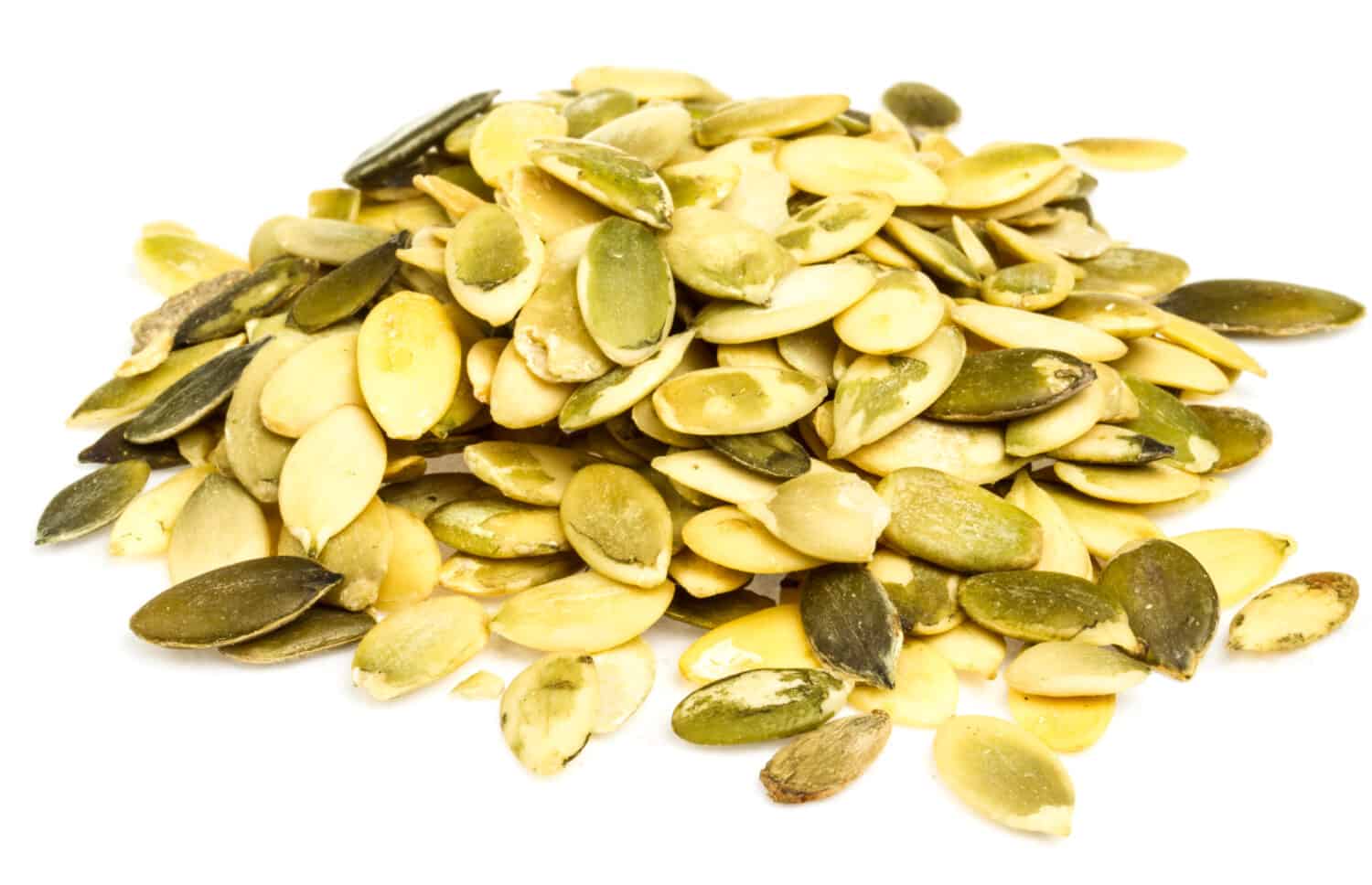In the autumn, when the air starts to get crisp and the days become colder and shorter, many people get excited about pumpkin season, and pumpkin spice fills the air. From holidays like Halloween and Day of the Dead, it might seem like pumpkins are everywhere. Many families start roasting pumpkin seeds from their carved jack-o-lanterns. If you love to roast pumpkin seeds and want to make pepitas, too, you may mistakenly confuse the two.
Pepitas and pumpkin seeds may seem the same, but they are not. While both pepitas and pumpkin seeds come from pumpkins, pepitas come from a certain type of pumpkin. One of the key differences between pepitas and pumpkin seeds is that pepitas are eaten raw, and pumpkin seeds must be roasted. Nutritionally, they are similar, but they differ in texture and taste. When it comes to pepitas vs. pumpkin seeds, you will be surprised to learn about the multitude of differences between these two similar-looking seeds.
Pepitas vs. Pumpkin Seeds: Nutritional Breakdown
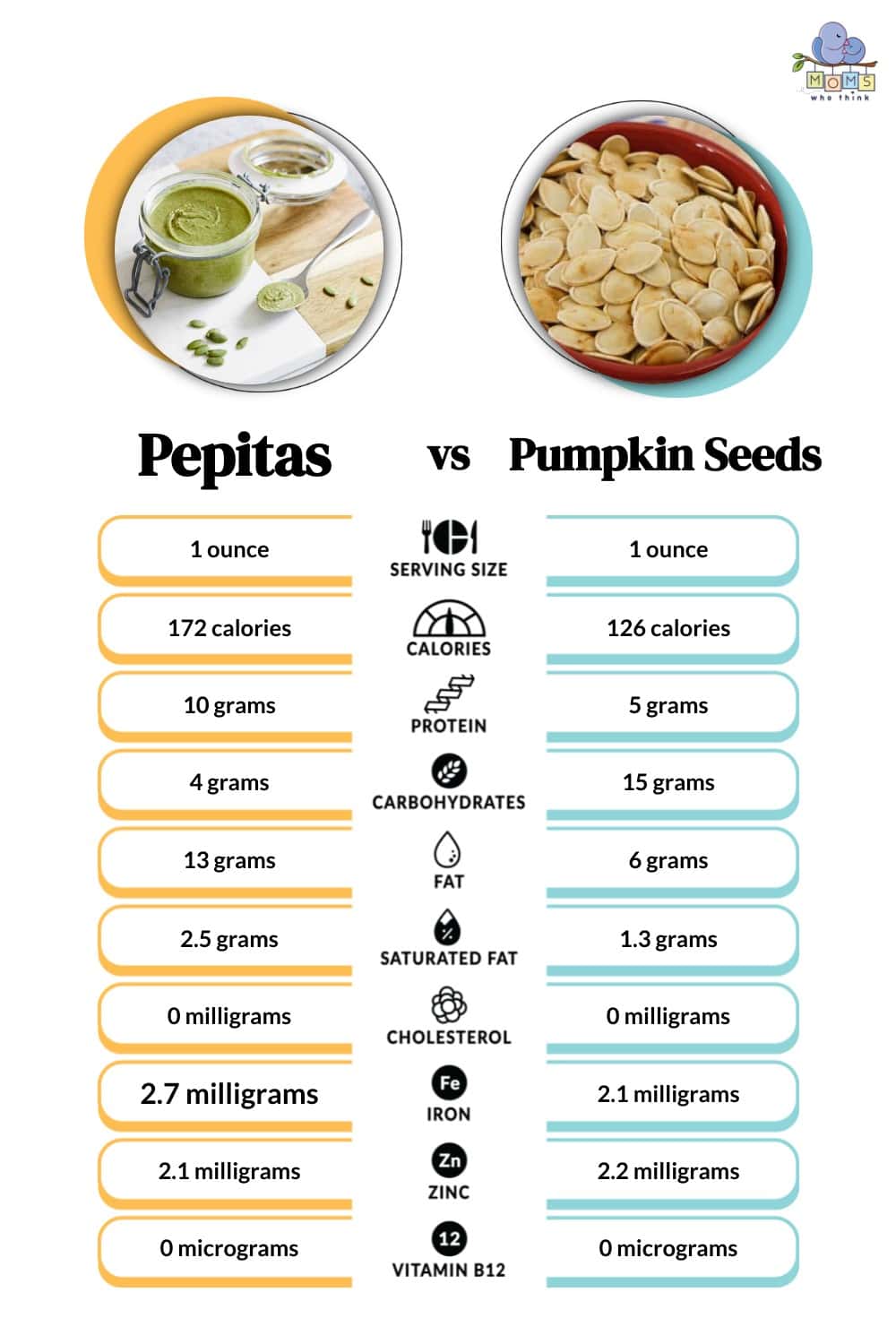
Pepitas are small, greenish, tear-shaped seeds. They look similar to pumpkin seeds, but pumpkin seeds have a white outer shell or hull. Both seeds are edible, but pepitas can be eaten raw or roasted, and pumpkin seeds must be roasted. Removing the pumpkin seed hull and getting to the inner seed is possible, but it's a lot of work, and the inner seed isn't the same as a pepita.
- The must-have convenient reference guide for every home cook!
- Includes more than 8,000 substitutions for ingredients, cookware, and techniques.
- Save time and money on by avoiding trips to grab that "missing" ingredient you don't really need.
Both pepitas and pumpkin seeds are healthy on-the-go snacks. They are rich in healthy fats and fiber. Plus, they are good sources of zinc, magnesium, omega-3, and omega-6 fatty acids. Both seeds have antioxidants that boost immune health and are a great source of plant-based protein.
Pepitas have more calories than pumpkin seeds, with 172 calories per ounce, while pumpkin seeds have only 126 calories per ounce. When it comes to protein, pepitas are the clear winner, with twice the amount of protein as pumpkin seeds. And pepitas are lower in carbohydrates, with four grams per ounce, while pumpkin seeds have 15 grams per ounce. Pepitas have a higher fat content with 13 grams per ounce than pumpkin seeds, which only have six grams per ounce. And pepitas have more saturated fat, with 2.5 grams per ounce, than pumpkin seeds, which only have 1.3 grams per ounce. While they have some differences in nutrition, the amount of iron and zinc is almost the same in both seeds.
For those on a low carbohydrate diet like keto or Atkins, pepitas is the best choice between the two snacks. But if you are watching calories, then pumpkin seeds may be a better choice.
What Are Pepitas?
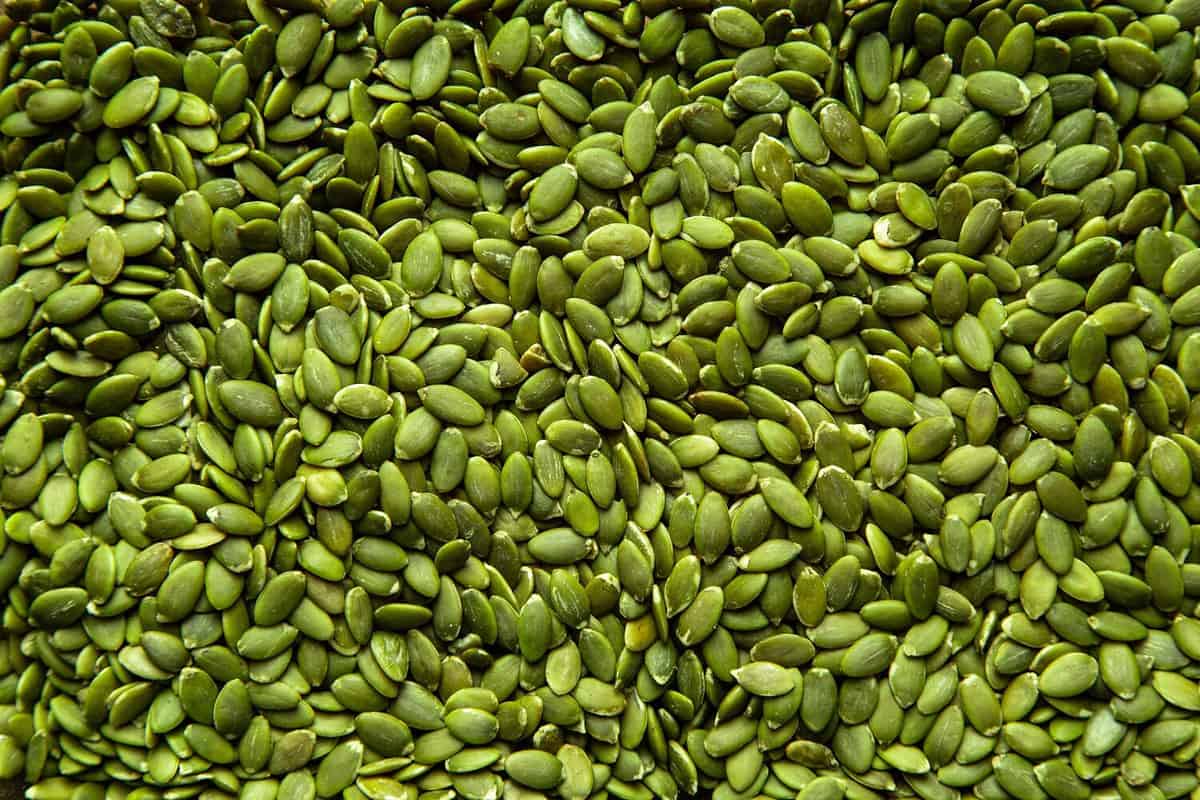
©Jason Sinn Photography/Shutterstock.com
Pepitas are green seeds without an outer shell. And while pepitas come from pumpkins, they are not pumpkin seeds. Pepitas only come from certain types of pumpkins, specifically Styrian pumpkins that are native to Styria, Austria. Pumpkins are native to North and Central America, and when European explorers came to the New World, they took the basic pumpkin seeds back with them. Pumpkins were then grown throughout Europe. Later, in a pumpkin patch in Styria, Austria, the Styrian pumpkin with hull-less seeds was discovered. The seeds have thin skins and look and taste different than pumpkin seeds. Styrian pumpkins and Oilseed pumpkins are filled with pepitas.
What Are Pumpkin Seeds?
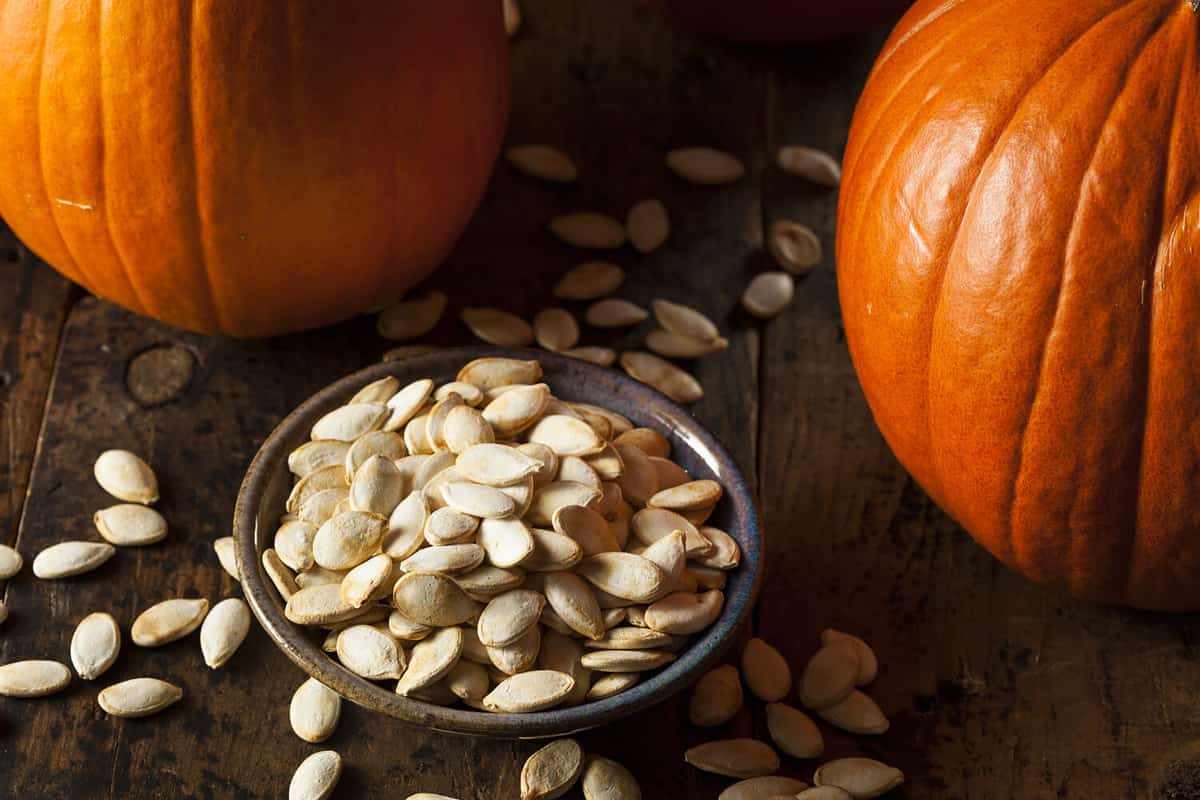
©Brent Hofacker/Shutterstock.com
Pumpkin seeds are white, tear-shaped seeds that are thick in the pulp of pumpkins. They have a hard outer shell that is only edible if roasted. Pumpkins are native to the Americas and have been eaten throughout history. According to Specialty Produce, pumpkins were a part of Mexico and Central America's indigenous people's diets as far back as 7000 BCE. Pumpkins were a staple in the indigenous populations of modern-day Canada and the U.S., too, because they were easy to grow and provided sustenance through long, cold winters. Nowadays, pumpkins are the symbol of Summer turning to Fall. Pumpkins are carved into jack-o-lanterns for Halloween, and pumpkin pie is a quintessential dessert for Thanksgiving and Christmas. In the Fall, the cult of pumpkin spice takes over to define the season, and everything, from coffee drinks to bagels to beer, has a pumpkin spice version.
How to Use Pepitas in Cooking
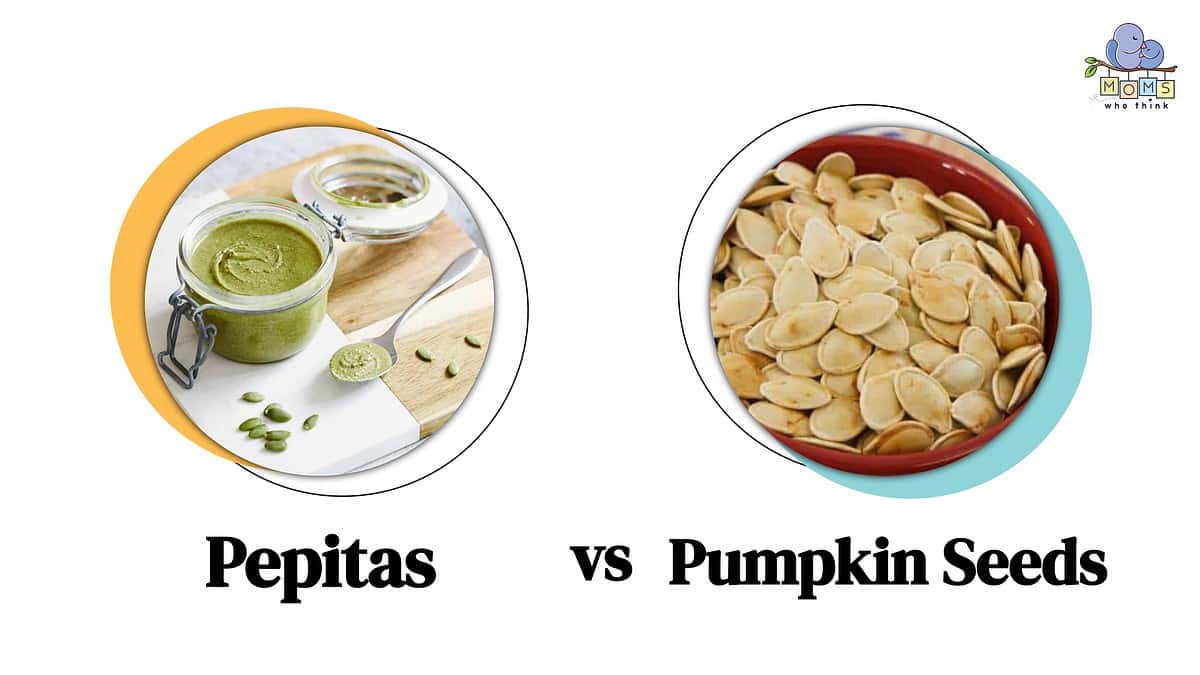
Pepitas are more than just a healthy snack. They are used in other recipes, too. You can buy pepitas in bulk at most health food stores, and some stores even sell them prepackaged with added flavors and spices. But these crunchy little seeds are more than just a snack and can be added to salads, granola, soup, bread, and just about anything that would benefit from some crunchy topping.
- The must-have convenient reference guide for every home cook!
- Includes more than 8,000 substitutions for ingredients, cookware, and techniques.
- Save time and money on by avoiding trips to grab that "missing" ingredient you don't really need.
Peptias are popular in Mexican dishes, including the classic pozole, a stew made with hominy and either chicken or pork. They can be ground and added to salsa and traditional Mexican mole sauce, which is a rich, thick sauce made with spices and chocolate and used on enchiladas, chicken, and other favorites. From tamales to tacos to burritos, pepitas have long been part of Mexico's rich cultural and culinary scene. But it does not stop at savory foods; pepitas can be made in dessert, too. They can be mixed in pepita caramel and brittle. Or sprinkled on ice cream, added to chocolate bark, ground and made into pie crust, or added to cookie dough, these little green seeds add flavor, texture, and health benefits to whatever they are added to.
How to Use Pumpkin Seeds in Cooking
Pumpkin seeds are popular in the Fall, and many families have the tradition of roasting pumpkin seeds while carving Halloween pumpkins. While fresh pumpkins are easy to find around the Fall holidays, you can still find pumpkin seeds at other times of the year. Similar to pepitas, pumpkin seeds can be eaten whole or ground, but the key is to roast them first. The hard white hull or shell is inedible raw and has a bitter taste. While they aren't poisonous and probably won't kill you, they are difficult to digest and covered in a thin membrane, which is considered an antinutrient. An antinutrient means that the components in raw pumpkin seeds can stop the body from absorbing other nutrients.
Pumpkin seeds can be mixed into flavored mixed nuts or added to homemade granola or granola bars. They can be added to cookies, chocolate bark, fudge, brownies, and other sweet treats that need textures and nutrients.
How to Roast Pumpkin Seeds
The most popular way to eat pumpkin seeds is roasted. To roast pumpkin seeds, start by removing them from the pumpkin. They can be tricky to remove, so roll up your sleeves and get ready to be covered in pumpkin pulp. Some people might benefit from wearing gloves because the pumpkin pulp can irritate some skin types. When the seeds have been removed, rinse them off and remove any pulp.
There is some debate about the next step; some advise that you must soak the seeds for a full twenty-four hours in salted water and then let dry before roasting. While others opt for a quick ten-minute soak in salty water. Either way is fine. The next step is to dry the seeds and layer them onto a baking sheet. You can keep it simple with a little olive oil and sea salt or mix it in other savory spices like garlic, cumin, paprika, chili powder, or Tajin. Or you can lean sweeter and add maple syrup, honey, sugar, and cinnamon. When the seeds are seasoned, bake them at 300 degrees Fahrenheit for 45 minutes. Low and slow is the key to roasting and keeps the small seeds from burning.
Conclusion
Pepitas and pumpkin seeds are similar but different. The main difference is that pepitas can be eaten raw, and pumpkin seeds should be cooked. Both seeds pack a nutritional punch and are a great part of a healthy diet.
The image featured at the top of this post is ©Andrey Starostin/Shutterstock.com.
- The must-have convenient reference guide for every home cook!
- Includes more than 8,000 substitutions for ingredients, cookware, and techniques.
- Save time and money on by avoiding trips to grab that "missing" ingredient you don't really need.
